Imagine walking into a bright and airy living room, filled with lush greenery and vibrant tropical plants. The air feels fresh and rejuvenating, and a sense of tranquility washes over you. In the corner stands a majestic Kentia Palm, its glossy dark green fronds gracefully swaying in the gentle breeze. This stunning indoor plant, also known as the Howea forsteriana, adds a touch of elegance and tropical charm to any home or office space.
As a lover of indoor plants, I couldn’t resist the allure of the Kentia Palm. Not only is it a beautiful decoration, but it also requires minimal care, making it an ideal choice for plant enthusiasts of all levels. Whether you’re a seasoned plant parent or just starting your indoor gardening journey, the Howea forsteriana will thrive in your care and bring a slice of tropical paradise to your surroundings.
Join me as I take you through the essential steps to care for your Howea forsteriana (Kentia Palm) in the UK. From understanding its appearance and light requirements to mastering the art of watering, fertilizing, and maintaining this captivating plant, I’ll provide all the insights you need to ensure your Kentia Palm flourishes in your home.
Appearance of Howea forsteriana (Kentia Palm)


The Howea forsteriana, or Kentia Palm, is a tall and elegant indoor houseplant that adds a touch of tropical beauty to any space. With its arching, glossy dark green fronds, it is no wonder that this palm is often referred to as a paradise palm. While it can reach up to 10 meters in its natural habitat, when grown as an indoor plant, the Kentia Palm typically reaches a height of 1.5 to 2.5 meters.
The fronds of the Howea forsteriana are feather-like and have a graceful appearance, making it a stunning focal point in any room. Its slow growth rate allows for easy maintenance and the ability to control its size by choosing an appropriately sized pot. The Howea forsteriana is a true botanical gem that brings a captivating touch of the tropics into your home.
 The Kentia Palm was a big hit in Victorian times, often found in royal homes and known as “the Parlor palm.” Its beauty and easy care made it a sign of luxury and class, a reputation it keeps in homes today.
The Kentia Palm was a big hit in Victorian times, often found in royal homes and known as “the Parlor palm.” Its beauty and easy care made it a sign of luxury and class, a reputation it keeps in homes today.
Light Requirements for Howea forsteriana

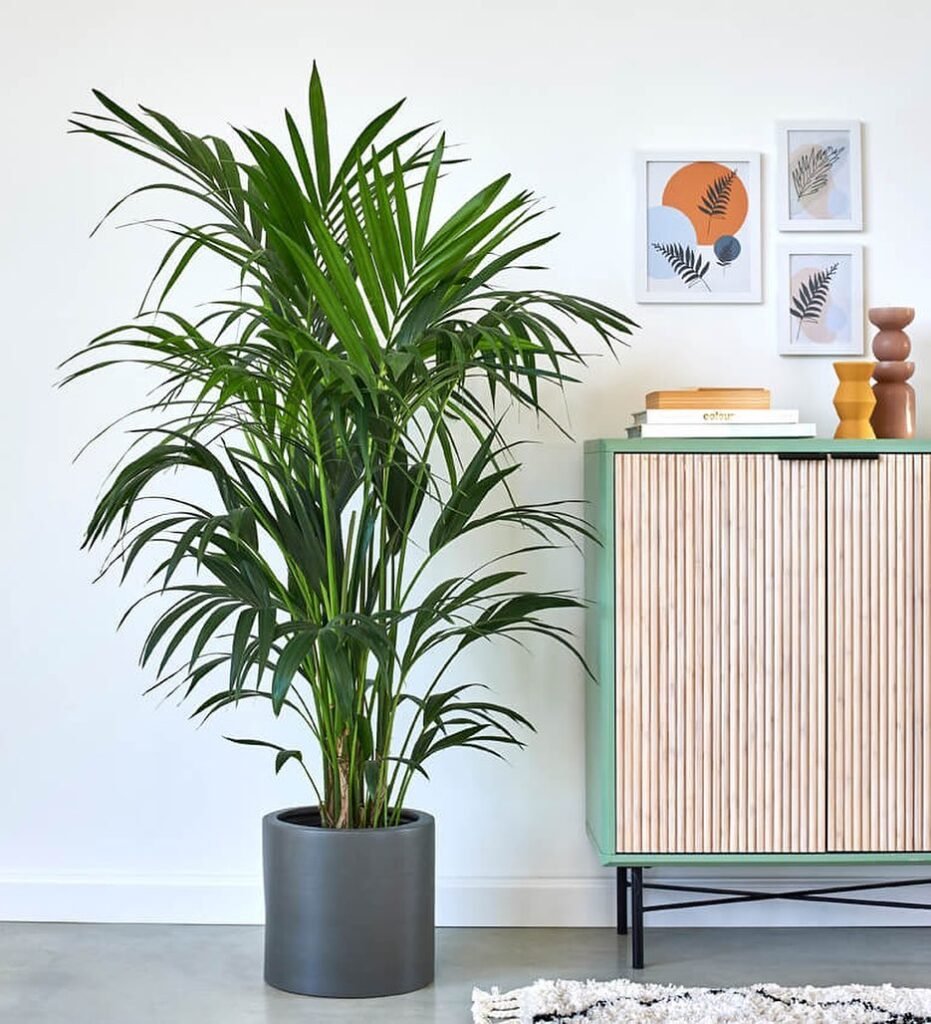
When it comes to caring for your Howea forsteriana, providing the right amount of light is crucial for its health and growth. This beautiful indoor plant thrives in bright but indirect light, making it a perfect addition to any well-lit room.
Kentia Palms should be placed in a spot that receives bright, filtered light throughout the day. However, it’s important to avoid direct sunlight, as it can scorch the leaves of the plant. Positioning the Kentia Palm near a north-facing window is an excellent choice in the UK, as it ensures indirect light exposure without the risk of scorching.
In cases where a north-facing window is not available, you can also provide your Kentia Palm with bright, indirect artificial light. There are several indoor lighting options specifically designed to mimic natural sunlight, which can effectively meet the plant’s light requirements.
Aside from avoiding direct sunlight, it’s also essential to keep your Kentia Palm away from draughty areas. Exposure to cold drafts can damage the leaves and compromise the overall health of the plant. Placing it in a stable environment with a consistent temperature will help maintain its optimal growth.

Watering Tips for Howea forsteriana (Kentia Palm)

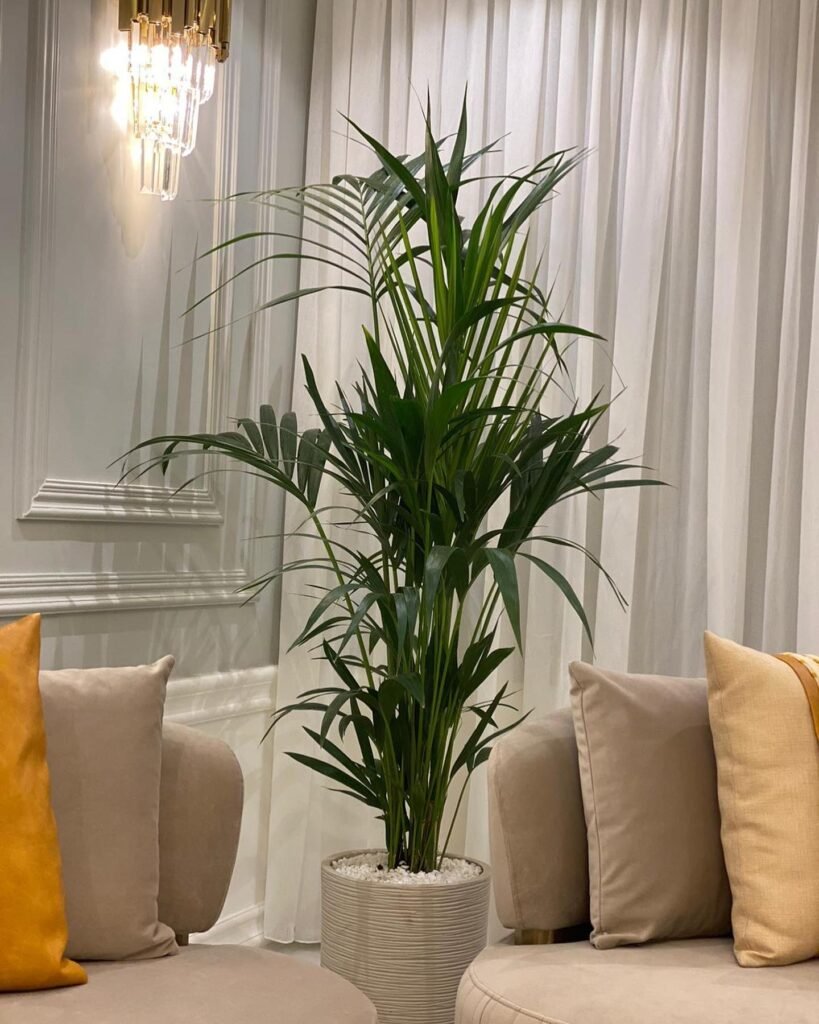
The Howea forsteriana is a beautiful indoor plant that adds a touch of elegance to any space. Proper watering is crucial to ensure the health and vitality of this tropical plant. Here are some watering tips to help you care for your Howea forsteriana:
- Monitor the soil: It is important to check the moisture level of the soil before watering your Kentia Palm. Wait until the top few centimetres of the soil have dried out before giving it a thorough watering. This will help prevent overwatering and root rot.
- Watering frequency: In the UK, watering your Kentia Palm once every 7-10 days is generally sufficient. However, factors such as humidity, temperature, and the size of the pot can affect the watering frequency. Always observe the plant and adjust your watering schedule accordingly.
- Thorough watering: When watering your Kentia Palm, make sure to thoroughly saturate the soil. Water until you see it coming out of the drainage holes at the bottom of the pot. This will ensure that the roots receive adequate moisture.
- Proper drainage: To prevent waterlogging, it is crucial to ensure proper drainage in the pot. Use a well-draining potting mix and make sure the pot has drainage holes. This will allow excess water to escape and prevent the soil from becoming overly saturated.
- Winter watering: During the winter months, when the Kentia Palm is in a state of dormancy, reduce the frequency of watering to prevent waterlogged soil. Allow the top few centimetres of the soil to dry out before watering again.

Fertilizing and Soil for Howea forsteriana
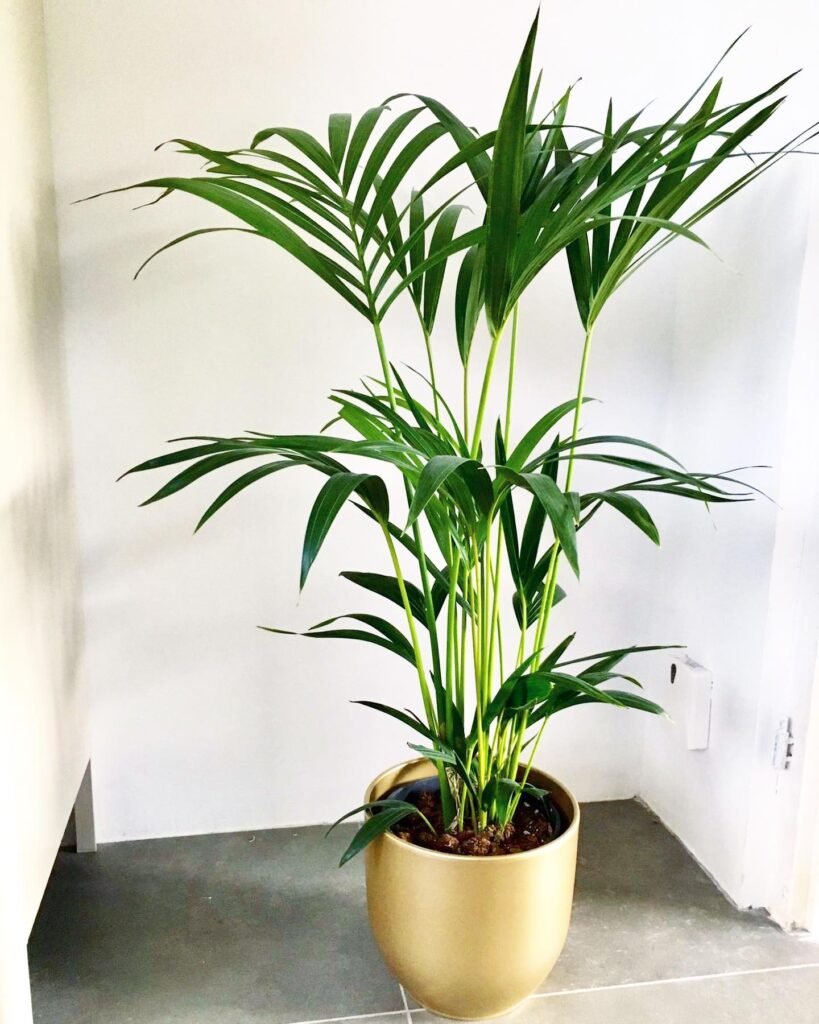
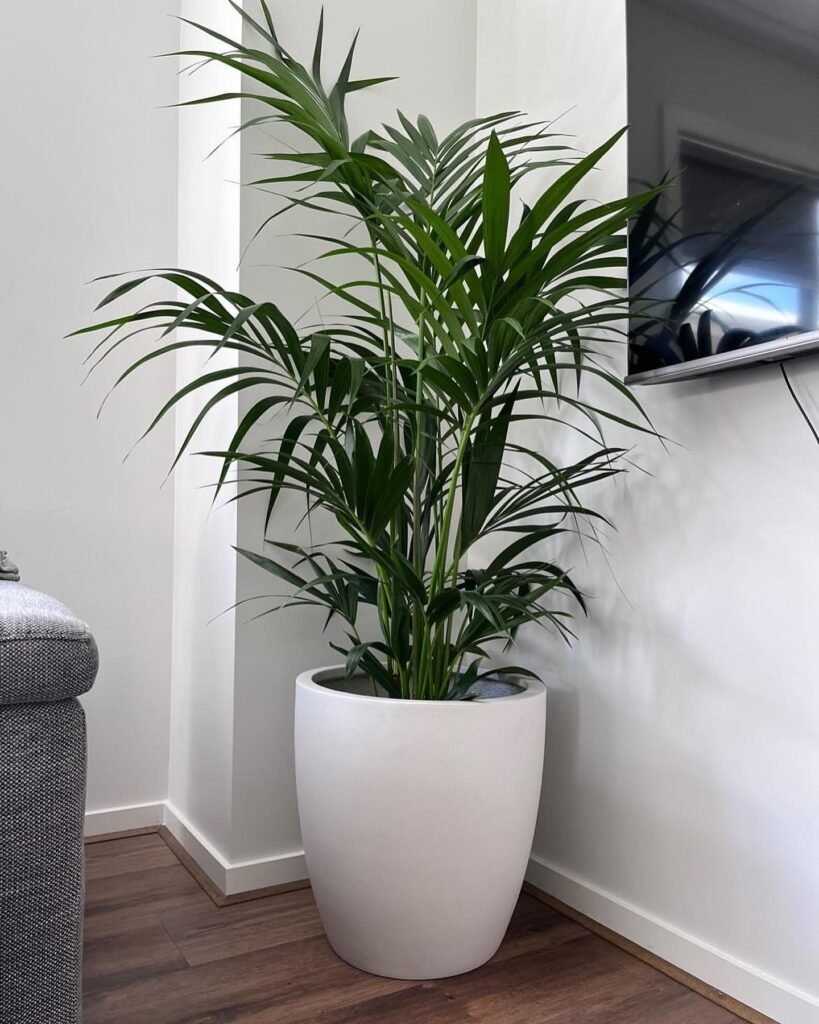
Proper fertilizing and providing the right soil conditions are essential for the healthy growth and development of your Howea forsteriana, or Kentia Palm. Here are some tips to help you ensure your plant’s well-being:
Fertilizing
During the growing season, it is recommended to fertilize your Kentia Palm once a month, using a balanced liquid fertilizer. This will provide the plant with the necessary nutrients it needs to thrive. Make sure to follow the instructions on the fertilizer packaging for proper dosing, as over-fertilization can harm the plant.
- Apply a balanced liquid fertilizer once a month during spring and summer.
- Follow the instructions on the fertilizer packaging for proper dosing.
Soil
When it comes to the soil, the Kentia Palm prefers a well-draining potting mix. Using a mixture of soil-based compost and horticultural grit or sand can create the ideal soil conditions for your plant. This will ensure proper drainage and prevent the soil from becoming waterlogged, which can lead to root rot.
- Use a well-draining potting mix consisting of soil-based compost.
- Add horticultural grit or sand to improve drainage.

Pruning and Maintenance for Kentia Palm
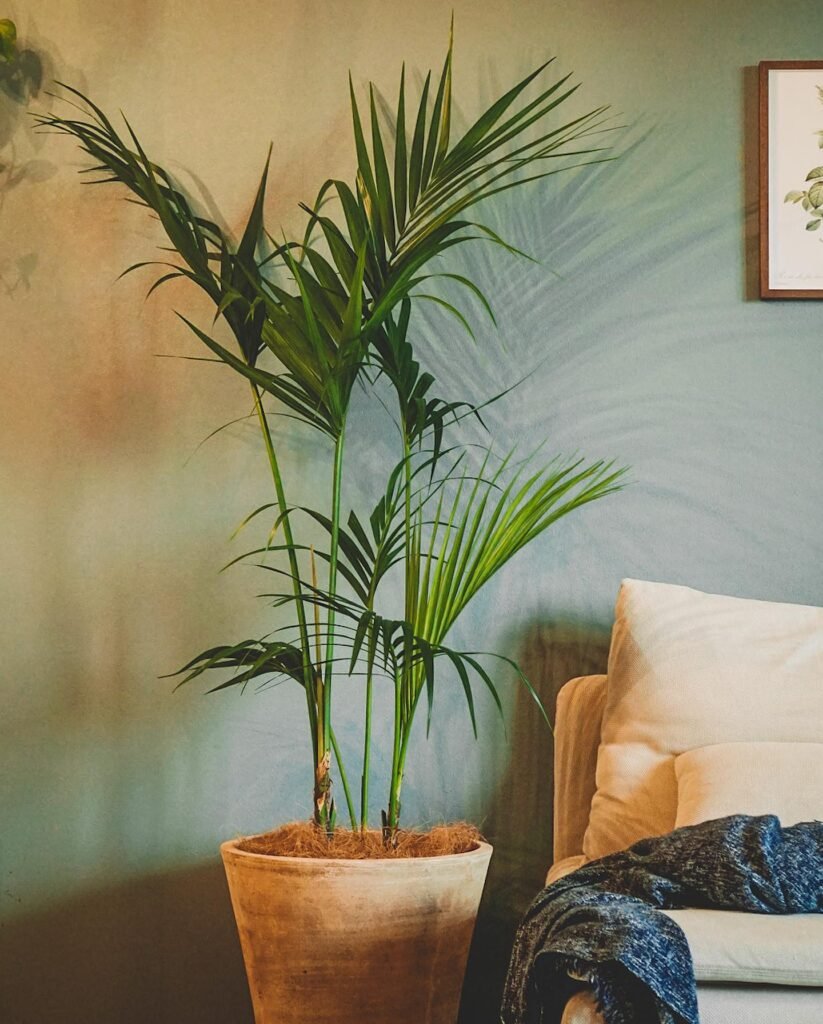

The Kentia Palm, or Howea forsteriana, is a stunning indoor plant that requires minimal pruning and maintenance. With proper care, this elegant plant can thrive and bring beauty to any space. Here are some tips on how to keep your Kentia Palm looking its best:
1. Removing Lower Fronds
Over time, the Kentia Palm naturally sheds its lower fronds. You can maintain a neat appearance by safely removing these fronds at the base of the plant. Use clean, sharp pruning shears to avoid any damage. This simple pruning technique helps to keep the plant looking tidy and allows the focus to remain on the lush, vibrant foliage.
2. Pruning Brown or Damaged Fronds
If you notice any brown or damaged fronds on your Kentia Palm, it’s essential to prune them off to promote new growth. Trim the fronds as close to the main stem as possible, using sterilized pruning shears. Removing these unsightly fronds not only improves the plant’s appearance but also encourages healthier, more vigorous growth.
3. Regularly Wiping the Leaves
Maintaining clean leaves is crucial for the overall health and appearance of your Kentia Palm. Regularly wipe the leaves with a damp cloth to remove dust and keep them looking fresh. This simple cleaning technique not only enhances the visual appeal of the plant but also ensures that the leaves can effectively photosynthesize and absorb light.
4. Avoiding Harsh Cleaning Products
While it’s essential to keep the leaves clean, it’s equally important to avoid using any harsh cleaning products. Chemical-laden cleaners can damage the delicate foliage of the Kentia Palm. Instead, use a mild solution of water and gentle, plant-safe soap to wipe the leaves. This gentle approach maintains the plant’s health and prevents any unwanted complications.
5. Low-Maintenance Care
The Kentia Palm is known for its low-maintenance nature, making it an ideal choice for plant lovers of all experience levels. It doesn’t require frequent repotting or extensive grooming, which makes it a hassle-free addition to any indoor plant collection. With proper watering, light, and occasional pruning, your Kentia Palm can thrive and continue to bring joy for years to come.

Propagating Howea forsteriana (Kentia Palm)


Looking to increase your indoor plant collection? Propagating Howea forsteriana, also known as the Kentia Palm, could be an exciting project for you. This beautiful plant can add a touch of the tropics to any room. Here, I’ll explain the process of propagating Kentia Palms, focusing on the method that has proven most effective: seed propagation.
Propagating the Kentia Palm via seeds is a rewarding endeavour, albeit one that tests your patience due to the slow germination process. For successful seed propagation, maintaining a warm and humid environment is crucial. The seeds thrive at temperatures around 27°C. Achieving this warmth can be as simple as placing the seeds on a heating mat or near a consistent heat source. Humidity plays a pivotal role as well; covering the seeds with a clear plastic dome or placing them in a propagator can help maintain the necessary moisture levels.
Patience is key, as the germination of Kentia Palm seeds can take a considerable amount of time, often several weeks to months. During this period, it’s vital to keep the soil consistently moist but not waterlogged. Over-watering can lead to fungal issues that may inhibit or even prevent germination.
Once germinated, seedlings require careful attention. They should be kept in a bright location with indirect sunlight to avoid scorching the delicate new leaves. Regular, light watering should continue to encourage growth, adjusting as the plant matures to accommodate its changing needs.
It’s worth noting that propagating Kentia Palms from seeds is more straightforward than attempting division. Kentia Palms are known for their single, upright growth habit, making division nearly impossible. Thus, seed propagation remains the best approach for those looking to expand their Kentia Palm collection.

Repotting Tips for Howea forsteriana

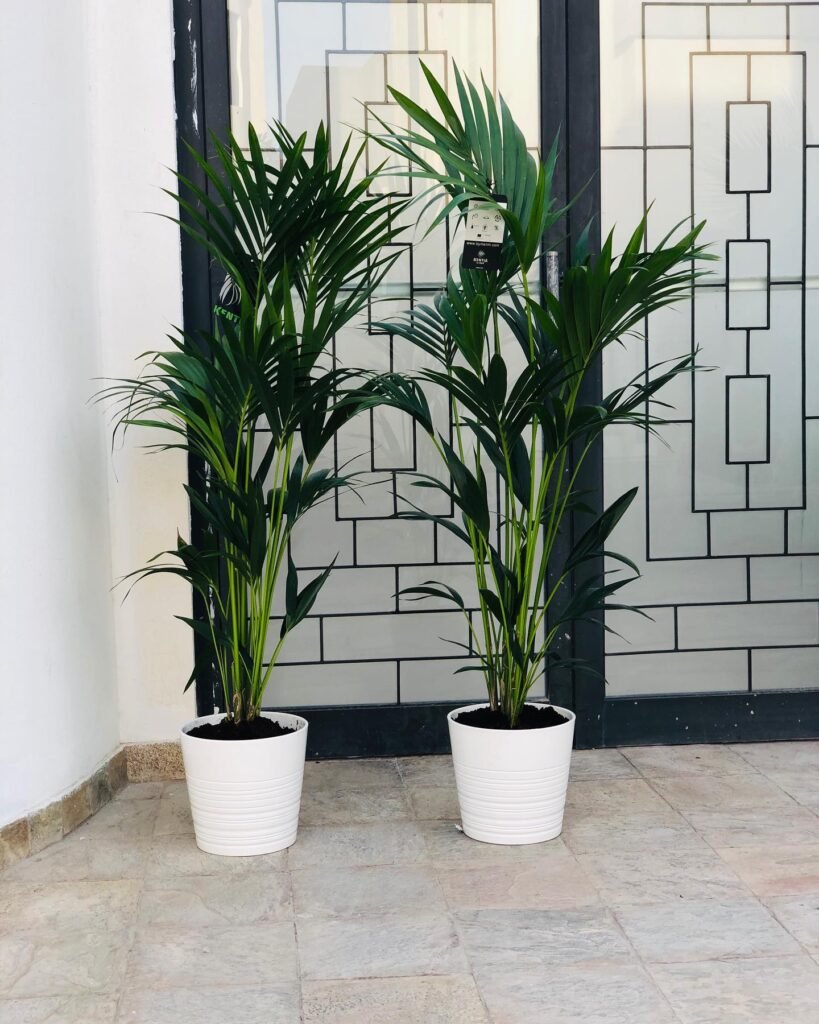
The Kentia Palm, is a stunning addition to any indoor plant collection. Repotting is an essential part of caring for your Howea forsteriana and ensures its continued growth and health. Follow these repotting tips to keep your Kentia Palm thriving:
- Repot every 2-3 years or when the plant has become root-bound.
- Select a slightly larger pot with drainage holes to allow excess water to escape.
- Choose a well-draining potting mix of soil-based compost.
- Add horticultural grit or sand to the potting mix for optimal drainage.
- Repot in spring before the growing season begins to minimize stress on the plant.
When repotting your Howea forsteriana, gently remove the plant from its current pot, taking care not to damage the roots. Place it in the new pot, ensuring that the plant sits at the same level as before. Fill in the gaps with the potting mix, being careful not to overly compact the soil. Finally, water the plant thoroughly to settle the soil and provide a good start for your repotted Kentia Palm.
 The Kentia Palm originates from Lord Howe Island, a remote spot in the Tasman Sea. This exclusive origin, combined with its adaptability to indoor life, makes it a fascinating addition to homes, blending exotic charm with resilience.
The Kentia Palm originates from Lord Howe Island, a remote spot in the Tasman Sea. This exclusive origin, combined with its adaptability to indoor life, makes it a fascinating addition to homes, blending exotic charm with resilience.
Troubleshooting Common Issues with Howea forsteriana (Kentia Palm)
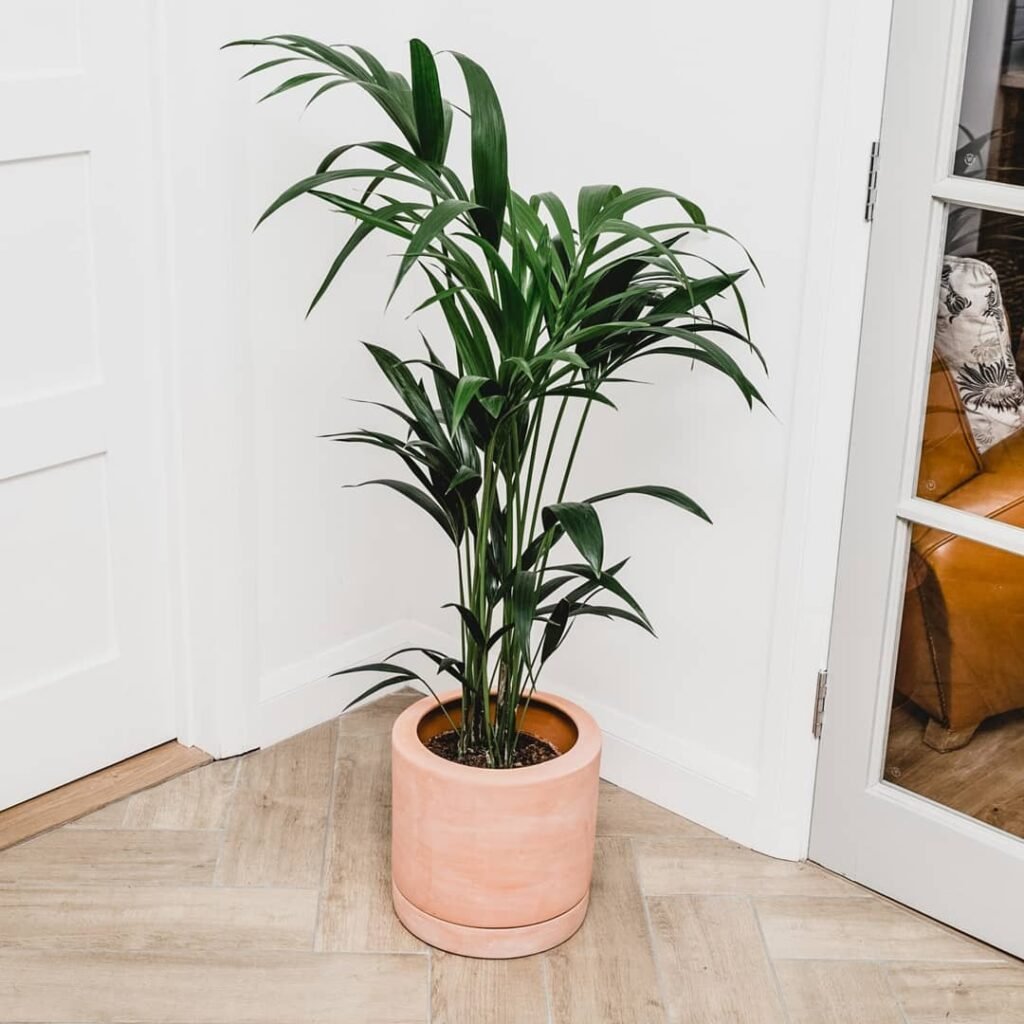
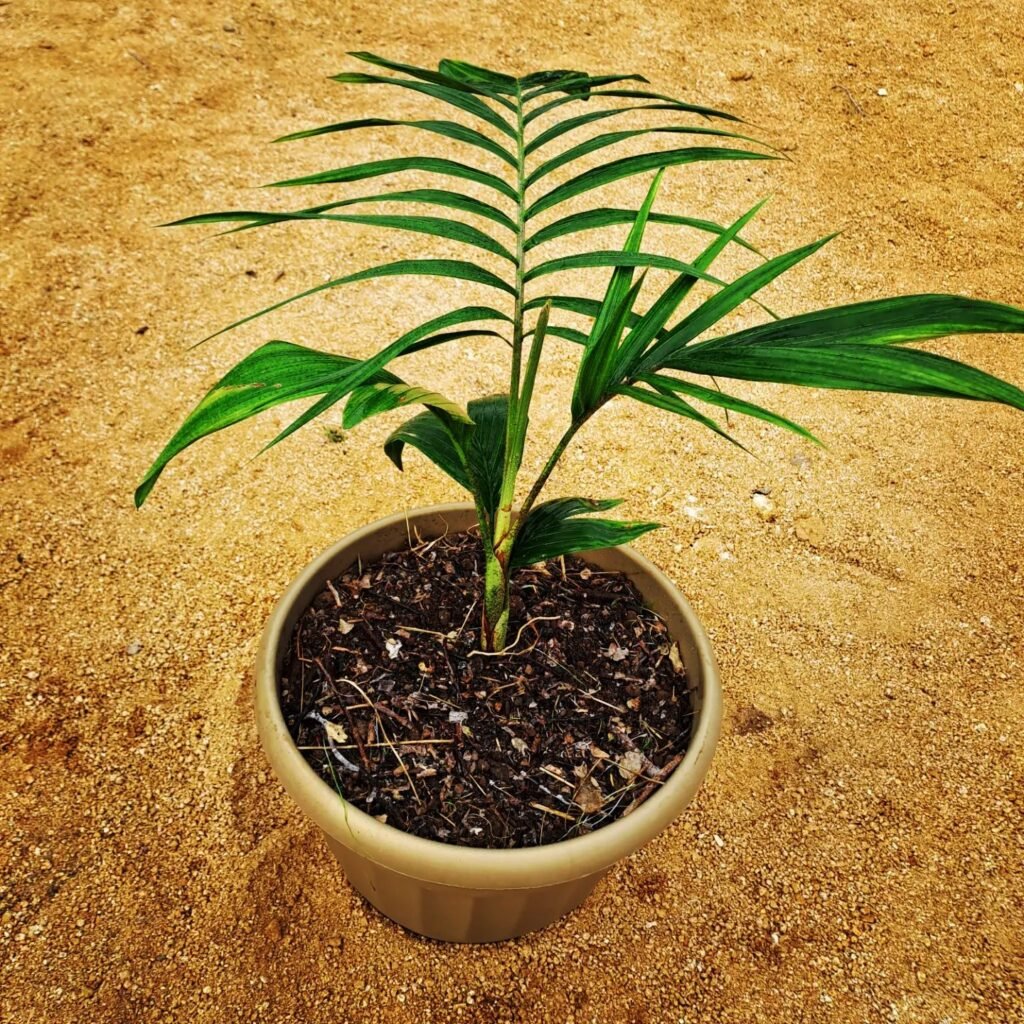
The Howea forsteriana, or Kentia Palm, is a beautiful and resilient indoor plant. However, like any plant, it can encounter some common issues. Here are a few troubleshooting tips to help you care for your Kentia Palm:
If you notice brown leaf tips, this could be a sign of underwatering or low humidity. Make sure to water your Kentia Palm thoroughly and consider placing a tray of water near the plant to increase humidity. Avoid overwatering, as this can lead to root rot.
Yellowing leaves may indicate overwatering or too much direct sunlight. Ensure that your Kentia Palm is not sitting in standing water and adjust its location to provide bright, indirect light. If the leaves become brown and crispy, they may be getting too much direct sunlight, so move the plant to a slightly shadier spot.
Another issue you may encounter is the presence of pests such as spider mites, mealybugs, or scale insects. If you notice small webs, cotton-like clusters, or small bumps on the leaves, take action immediately. Use appropriate houseplant pesticides to treat the infestation, following the instructions carefully.
To keep your Kentia Palm looking its best, regularly clean the leaves with a damp cloth to remove dust and improve its overall appearance. This will also help prevent pests from settling on the leaves.
Helpful Videos about Howea forsteriana (Kentia Palm)
I recently discovered a series of enlightening videos centred on the care of Howea forsteriana, more commonly known as the Kentia Palm. These videos are brimming with useful suggestions and clear-cut guidance, tailored to aid even those who are novices in the gardening realm to thrive in looking after this elegant palm. For individuals new to the world of plants or keen on integrating this palm into their green assembly, these tutorials prove to be an invaluable treasure trove.
FAQ about Howea forsteriana (Kentia Palm)

Want to know how to take care of your Kentia Palm? You’re in the right spot! I’ve put together all the key info to help you look after your palm easily. From getting the watering just right to solving common problems, you’ve got this.
The Kentia Palm thrives in bright, indirect light. Avoid direct sunlight, especially in the summer, as it can scorch the leaves. A spot near a window with a sheer curtain would be ideal.
Water when the top inch of soil feels dry. Kentia Palms prefer consistently moist (but not waterlogged) soil. In the UK climate, this might mean watering once a week in summer and less frequently in winter.
Yes, it prefers a well-draining potting mix. A mix designed for palms or a general-purpose potting soil amended with perlite or sand works well.
If the leaves become yellow or brown, especially around the edges, it might be getting too much direct sunlight. Move it to a shadier spot.
The UK climate is generally too cool and not suitable for growing Kentia Palms outdoors year-round. They are best kept indoors where you can control the environment.
The Kentia Palm prefers temperatures between 16-24°C (60-75°F). Avoid placing it near cold drafts or radiators.
Fertilize with a palm-specific or balanced houseplant fertilizer at half strength every 6-8 weeks during the growing season (spring and summer).
Repot every 2-3 years or when roots become pot-bound. Use a pot 2-3 inches larger in diameter than the current one and fresh potting mix.
Brown tips can be a sign of low humidity, overwatering, or too much fertilizer. In the UK, indoor heating can reduce humidity levels, so consider misting your palm or using a pebble tray.
Yes, but only to remove dead or damaged fronds. Cut them close to the trunk using clean, sharp scissors.
Yes, Kentia Palms are non-toxic to cats and dogs, making them a great choice for pet owners.
Besides misting, placing a humidifier nearby or grouping plants together can increase humidity.
Keep an eye out for common pests like spider mites and scale. Treat infestations early with insecticidal soap or neem oil.
Yes, Kentia Palms are slow growers, especially in the lower light conditions typical of UK homes. Ensure proper care for healthy growth.
Provide ample space for the palm to spread its fronds. Avoid placing it in cramped corners where its leaves can’t fully expand.
While the UK climate may not be ideal for year-round outdoor growth, you can place your Kentia Palm outside in a shaded spot during the warmer months. Just be sure to bring it back indoors before the temperature drops in the autumn.
Dust can accumulate on the broad leaves, blocking light and potentially harboring pests. Gently wipe the leaves with a damp cloth or sponge to keep them clean. Avoid using leaf shine products, as they can clog the pores of the leaves.
I hope this FAQ has helped you understand how to care for your Kentia Palm. If you have any more questions, feel free to drop them in the comments. I’m here to help you out.
Happy gardening!

